CONTENTS- 1. Definition of air and it’s composition
2. Concept of atmosphere
3. Wind, breeze, tempest and Storm
4. Windmill
5. Smoke
6. Respiratory Gases
7. Respiration in humans, aquatic animals and soil dwellers
8. Photosynthesis
9. Benefits of air
Definition of air and it’s composition-
Air is present all around the earth in the atmosphere. Air is a heterogeneous mixture of different gases. The gases present in air are –Nitrogen (78.1 %), Oxygen (20.9 %), Carbon dioxide gas (0.038%) and rest other gases lie Argon, Water Vapour etc. (1%).
Concept of atmosphere-
The earth is covered with a blanket of different gases in a region called atmosphere. The gravity/gravitational force of the earth do not allow the gases to go away from the atmosphere. In atmosphere different climatic activities go on. Ozone layer of atmosphere absorbs the harmful ultra violet rays and reflects the others. It controls excess falling of temperature during night. Weather changes occurs in atmosphere.
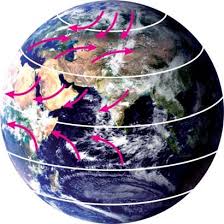
Wind and breeze –
The blowing air is called wind. There are different places on the earth that are heated differently. Where there is more heating the warm air rises up because it becomes light in weight, and a low air-pressure is built. So, the air blows from surrounding. The gentle wind is called breeze.
Properties of Air-
a. Air occupies space- The air is found in almost all part on the earth. The place where there is no air that is called vacuum. In an empty bottle, there is air. It is confirmed when it is immersed inside the water and slightly tilted. We see some water bubbles are coming out. Water also contains the air so that aquatic animals do survive in the water.
b. Air has weight- If we compare two inflated balloons of different sizes; we see that weight of lager inflated balloon is more. So, it can be said that air has weight.
c. Air puts pressure- When we travel on a bicycle against the wind there is a pressure on the person to move against the wind.
Importance of Air-Air is essential for living organisms. Except a few bacteria, all the plants and animals survive on oxygen. Animals and plants take oxygen during respiration and release carbon-dioxide gas. The air taken by the living organisms is called inhaled air. The air released by the organisms is called exhaled air.
Breathing= Inhalation + Exhalation
The oxygen is used to generate energy by breaking down the glucose inside the cell. Air helps in burning of combustible substances.
Activity- Air is essential for burning (or combustion)-
On a smooth surface two glowing wax candles were kept. One of them was covered with a glass tumbler. As a result the flame of covered candle goes off after a few seconds and lots of smoke came out. It proves that air is necessary for burning or combustion.
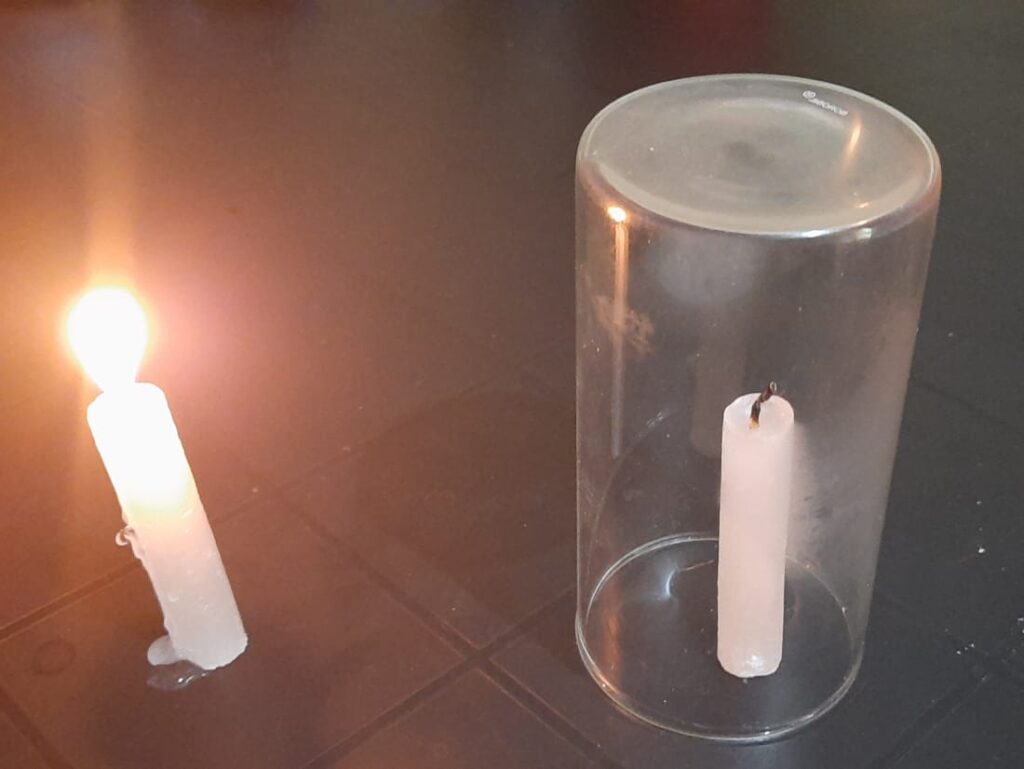
How aquatic animals take the oxygen-
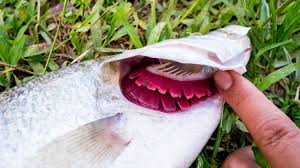
The gills are found in many fishes. Gills help in taking of oxygen dissolved in water.

Lotus and other aquatic plants have stomata (minute pores) on upper side. It helps in exchange of oxygen and carbon dioxide gas. Stomata also help in loss of water vapours from leaves.
How oxygen is taken by soil living organisms and roots-
There are pores in between soil particles and holes. Through these pores the air goes upto the animals and roots. e.g. – Earthworms, Frogs
When there is turning and softening of soil by ploughing there air reaches up the roots properly. It helps in proper growth of plants. In absence of air the plants starts to dry and become yellowish.
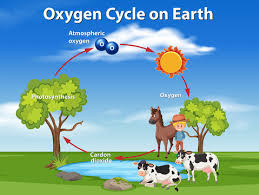
Oxygen Cycle- Oxygen is a gas used in burning and respiration. It is taken by plants and animals to do respiration to release energy (A.P.T.) and carbon dioxide gas.
During photosynthesis, the carbon dioxide gas is taken by plants. As a result of photosynthesis, oxygen is formed.
The cyclic rotation of oxygen due to respiration and photosynthesis is called oxygen cycle. It maintains the balance of oxygen in environment.
Uses of Air- Following are some of the uses of air-
1. Oxygen present in air helps in burning (or combustion) of substances.
2. The living organisms need oxygen for respiration.
3. Carbon dioxide gas is taken by plants for doing photosynthesis.
4. It helps in evaporation of sweat from the body, so we feel comfort.
5. The temperature of air can be controlled by air conditioners.
6. Wind is used in wind mills to take out underground water and generation of current.
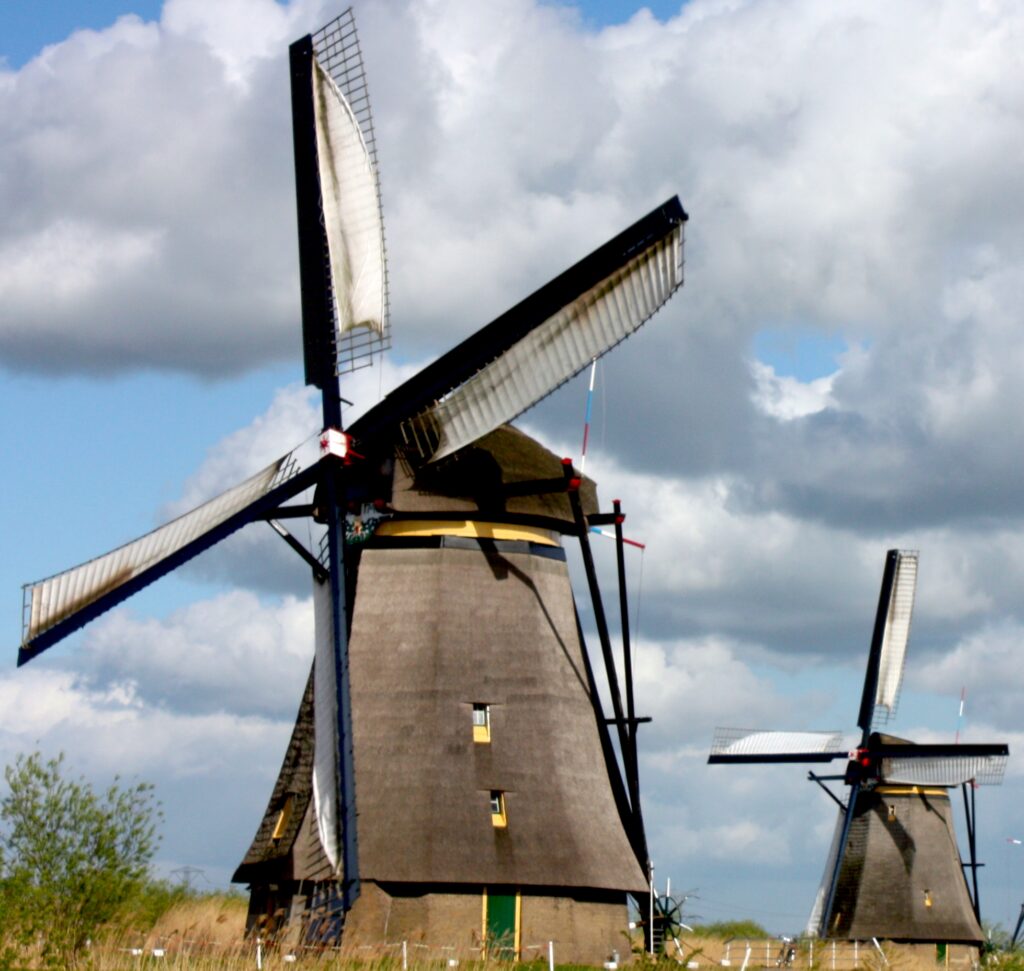
7. Air helps in pollination of flowers and seed dispersal.
8. The wind helps in drying of wet clothes.
9. Wind is used in winnowing i.e. separation of grains from husk.
10. Air is filled in the tyres of vehicles.
11. Air helps in drying of the grains because of fast rate of evaporation.
12. Wind helps in movement of aeroplanes, parachutes, gliders and sailboats.
Air Pollution- The deterioration in the quality of air due to adding of undesirable substances is called as air pollution. The undesirable substances are called as air pollutants. e. g.- Carbon monoxide gas (CO), Carbon dioxide gas (CO2) , Sulpher dioxide (SO2) , Hydrogen sulphide (H2S) gas, ashes, smoke etc.
Causes of air pollution-Air get polluted due to adding of dust and germs, smoke from vehicles, harmful gases from industries, forest fire, volcanic eruption, sand storm and pollination of flowers. Burning of fossil fuels adds smoke and harmful green house gases like carbon dioxide and carbon dioxide gas in air.
Affects of air pollution- Respiratory diseases like asthma, lung cancer, heart disease, hazy daytime, etc are caused. The green house effect and global warming are the results of air pollution.
Control of air pollution-
1. The plantation of more trees reduces air pollution by utilizing more carbon dioxide gas.
2. No burning of Papers, old clothes, dry leaves controls the air pollution.
3. Use of clean fuels like C.N.G. (compressed natural gas) and L.P.G. (liquified petroleum gas) reduces air pollution.
4. Firecrackers produce lots of smoke on burning. They should not be used.
5. Awareness programmes should be conducted to reduce air pollution.
EXERCISE QUESTIONS-
Q. 1 What is the composition of air?
Ans- Air is a heterogeneous mixture of different gases. The gases present in air are –Nitrogen (78.1 %), Oxygen (20.9 %), Carbon dioxide gas (0.038%) and rest other gases lie Argon, Water Vapour etc. (1%).
Q. 2 Which gas in the atmosphere is essential for respiration?
Ans-Oxygen
Q. 3 How will you prove that air supports burning?
Ans-On a smooth surface two glowing wax candles were kept. One of them was covered with a glass tumbler. As a result the flame of covered candle goes off after a few seconds and lots of smoke came out. It proves that air is necessary for burning or combustion.

Q. 4 How will you show that air is dissolved in water?
Ans- When water is boiled in a utensil, a number of tiny air bubbles can be seen on inner surface of the utensil. It proves that these air bubbles came from the air dissolved in water.
Q. 5 Why does a lump of cotton wool shrink in water?
Ans- The air remains trapped in the lump of cotton wool. When it is dipped inside the water, the water is absorbed and air goes air escapes out. As a result cotton wool shrink.
Q. 6 The layer of air around the earth is known as——
Ans-atmosphere
Q. 7 The component of air used by green plants to make their food, is —–
Ans- carbon dioxide (CO2) gas
Q. 8 List five activities that are possible due to the presence of air.
Ans-Following activities are possible due to presence of air-
1. Oxygen present in air helps in burning (or combustion) of substances.
2. The living organisms need oxygen for respiration.
3. Carbon dioxide gas is taken by plants for doing photosynthesis.
4. It helps in evaporation of sweat from the body, so we feel comfort.
5. The wind helps in drying of wet clothes.
Q. 9 How do plants and animals help each other in the exchange of gases in the atmosphere?
Ans- Oxygen is a gas used in burning and respiration. It is taken by plants and animals to do respiration to release energy (A.P.T.) and carbon dioxide gas. During photosynthesis, the carbon dioxide gas is taken by plants. As a result of photosynthesis, oxygen is formed. The cyclic rotation of oxygen due to respiration and photosynthesis is called oxygen cycle. Thus, plants by photosynthesis and animals by respiration help in exchange of gases in atmosphere.
©www.vkscience.com